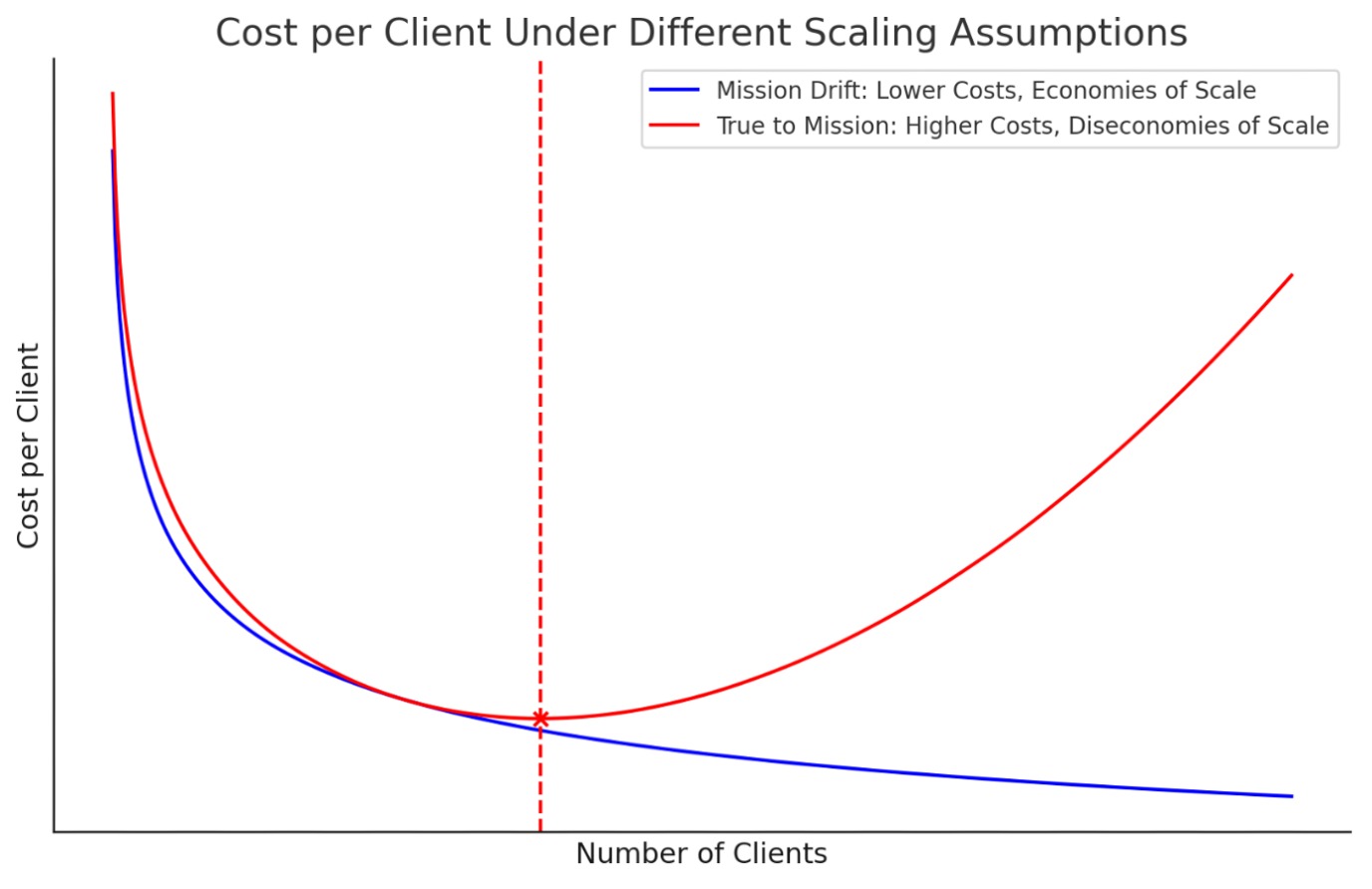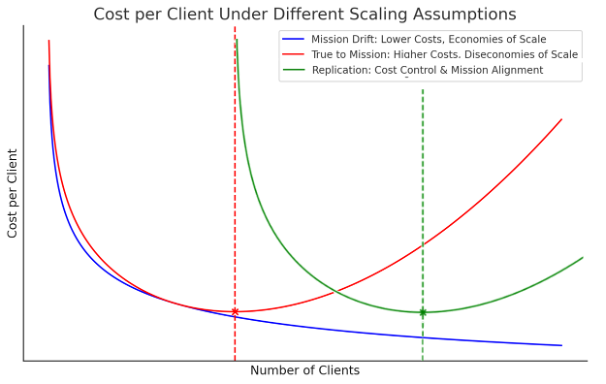The Relevance of Costs in Scaling Social Innovation Projects
| Datum: | 15 juli 2024 |

Scaling social innovation projects presents unique challenges, especially in managing costs. As social enterprises grow, they often face increasing average costs per client, which can hinder their mission. This blog explores the complexities of scaling and strategies for cost control.
Diseconomies of Scale and Mission Drift
Economies of scale refer to cost advantages gained with increased production. However, for social enterprises, scaling can lead to diseconomies of scale, where costs per unit rise as the organization grows. This happens due to:
Geographic Dispersion: Serving clients who are most in need, such as relatively poorer clients, often means reaching individuals in remote or rural areas, which increases logistical costs.
Human-Centric Operations: Many social enterprises rely on personalized services that are hard to streamline with technology.
Additional Services: Offering support services like training adds to operational costs.
These factors can lead to higher costs per client as the organization expands. To manage these costs, some organizations may shift their focus to clients who are cheaper to serve, known as mission drift. While this reduces costs, it often deviates from the core mission of helping those in need.
While this can help achieve reduce costs and benefit from economies of scale, it often leads to a deviation from the organization’s core mission of serving the most in need.
Figure 1 illustrates these cost dynamics under different scaling assumptions. It compares two scenarios: in the first scenario, the organization engages in mission drift to reduce costs and achieve economies of scale (blue line), while in the second scenario, the organization stays true to its mission, which can lead to higher costs per client and diseconomies of scale (red line).
The blue line represents "Mission Drift," where the organization focuses on clients requiring fewer resources, keeping costs low and benefiting from economies of scale. The cost per client decreases as the number of clients increases.
The red line represents the "True to Mission" scenario, where the organization stays committed to its core mission, leading to diseconomies of scale. Initially, costs per client decrease, but after a certain point (red dashed line and star), costs begin to rise due to increased complexity and resource needs.
The red dashed line and dot mark the minimum efficient scale, indicating the point where costs start to increase as organizations that stay true to their mission scale further.
Replication as a Strategy for Cost Control
To tackle diseconomies of scale and avoid mission drift, social enterprises can adopt replication models. Replication involves duplicating successful innovations in new contexts, allowing organizations to expand impact without the strain of scaling a single entity.
Decentralized Operations: By creating new branches or entities based on the original model, organizations can distribute operational burdens and maintain manageable scales.
Local Adaptation: Replicated models can be tailored to fit local conditions, enhancing efficiency and reducing costs associated with geographic dispersion.
Shared Resources: Branches can share resources, knowledge, and best practices, improving overall cost efficiency.
Replication helps organizations stay true to their mission while controlling costs. This strategy avoids mission drift and ensures the core mission remains intact.
Let's return to our illustration (figure 2) to visualize replication as a strategy for cost control. The revised illustration adds a green line for scaling through replication. The "Replication" scenario shows social innovation provided at the minimum efficient scale. Further scaling is achieved by creating new entities based on the original model. Two entities can serve more clients at lower costs while staying true to their mission. The green dashed line and star indicate the number of clients served without the cost increase seen in the "True to Mission" scenario.
Implications for Scaling Strategies
Recognizing potential diseconomies of scale in social innovation requires a thoughtful approach. While mission drift can lower costs, it implies deviating from the core mission. Staying true to the mission can become costly. Replication offers a viable alternative, enabling organizations to scale impact effectively while maintaining their mission focus and managing costs.
Effective replication requires careful planning and robust support systems. Ensuring that new entities adhere to the original mission involves close collaboration, comprehensive training, regular monitoring, and clear operational guidelines.
Conclusion
Scaling social innovation is challenging, especially when it leads to diseconomies of scale. By focusing on replication, social enterprises can scale their impact more effectively, ensuring they continue supporting those in need while remaining financially sustainable. Practitioners and future research should explore these strategies to identify the best pathways for expanding social impact cost-efficiently.
Authors: Florian Noseleit - f.noseleit@rug.nl
Diego Soares - d.m.soares@rug.nl



